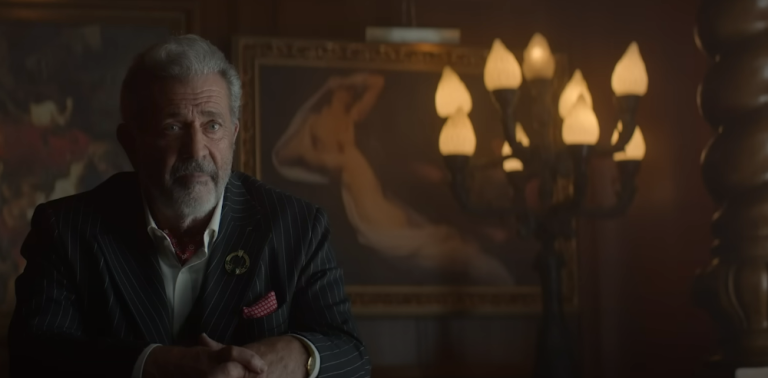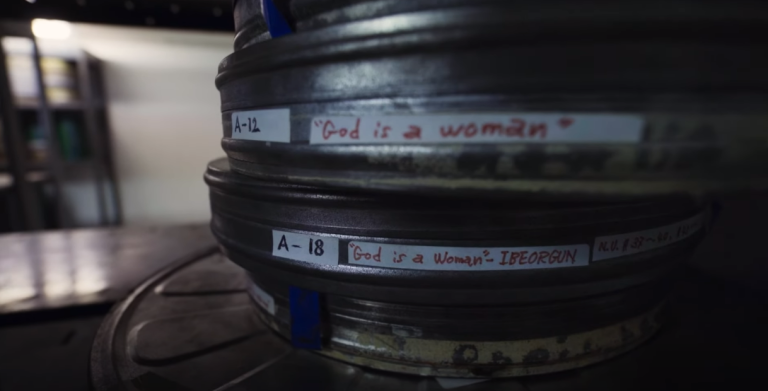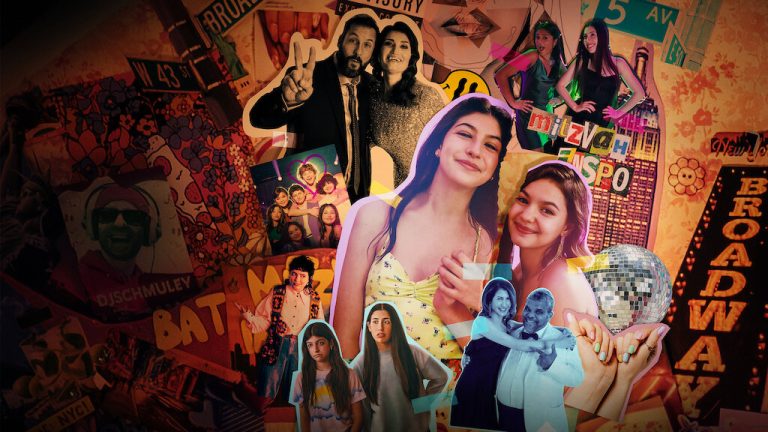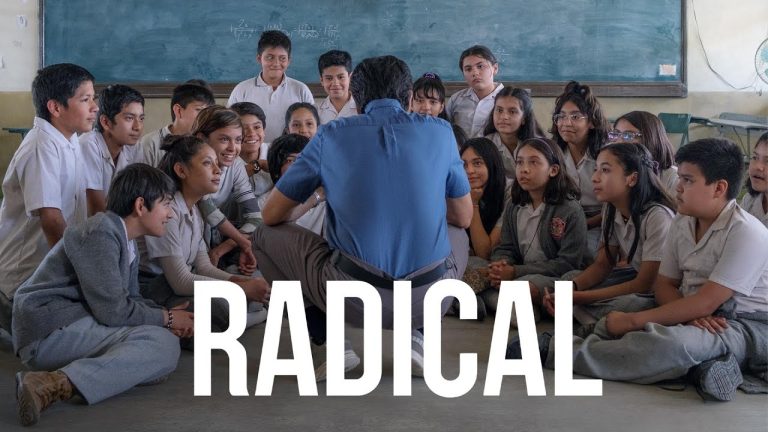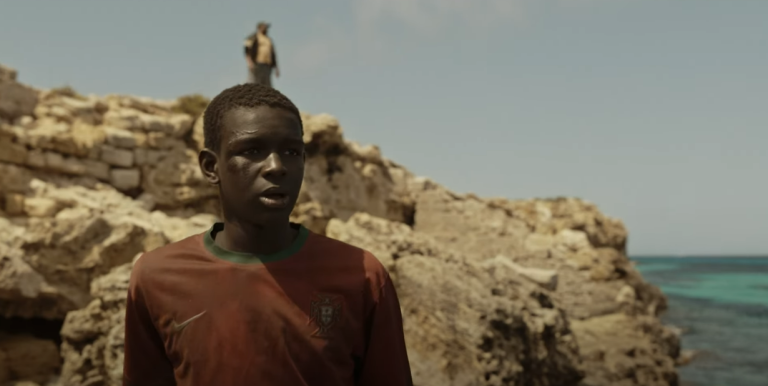
In “Red Right Hand,” a movie written by Jonathan Easley and directed by Ian and Eshom Nelms, the character Big Cat warns that survival in the hills requires accepting violence. This reflects the gritty tone reminiscent of pulp novels, akin to the filmmakers’ previous work in “Small Town Crime.”
In the Kentucky crime thriller “Red Right Hand,” Orlando Bloom plays Cash, a former addict marked by a burned red hand from his past with Big Cat’s gang. He’s now striving for a peaceful life following his sister’s drug-related death. Cash resides in a shack on her property, assisting his alcoholic brother-in-law Finney and his niece Savannah with the farm.

In the story, Cash’s attempt to leave his past behind is shattered when Big Cat’s gang targets his family over unpaid debt. Despite his reluctance, Cash is drawn back into the criminal world to help Big Cat expand her empire. Cash’s ability to charm people while being capable of violence becomes crucial in securing Big Cat’s legacy through dangerous drug deals. Aware of the risks, Cash and Finney ensure that Savannah learns how to defend herself with a gun.
Bloom tries to portray Cash as tough and muscular, but his performance feels somewhat forced and lacks authenticity. His attempt at realism falls short, as he doesn’t fully embrace the exaggerated nature of the character. While sincerity has its place, a story like this demands a larger-than-life portrayal.

Garret Dillahunt shines as Wilder, a former addict and gang member turned preacher. His performance is bold, with grand speeches and dramatic gestures. This approach allows a sermon inspired by John Milton’s “Paradise Lost” to evoke the deranged fervor reminiscent of Preacher Harry Powell in “The Night of the Hunter,” a classic of Southern pulp cinema.
Andie MacDowell delivers one of her finest performances in years as Big Cat, reigning over her empire from a grand red brick mansion. Big Cat is a formidable villain who isn’t afraid to get her hands dirty, whether it’s cutting off thumbs or using her underlings for her own pleasure. MacDowell captures the character’s essence with every line, skillfully blending charm with menace. Her portrayal reflects the power of Southern subtlety, where whispers carry more weight than shouts, and threats hide behind polite facades.
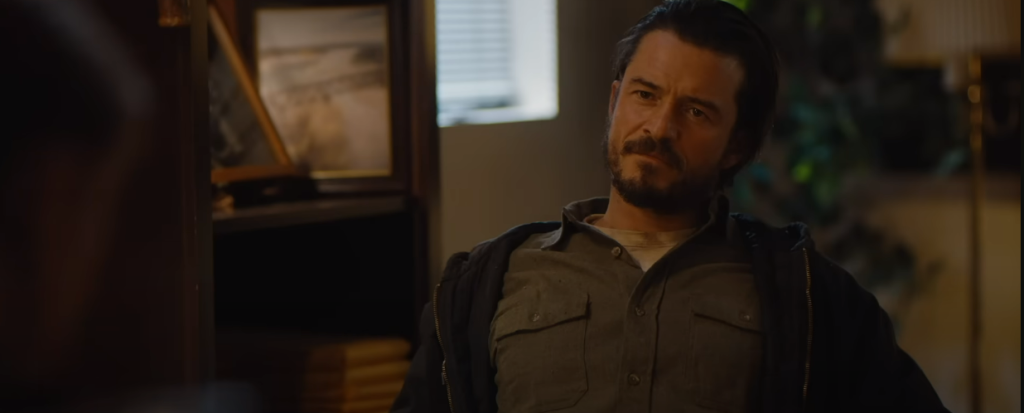
Unfortunately, the menacing gang members in Big Cat’s crew come across more like members of a polished band rather than ruthless killers. They appear too clean-cut and well-groomed, lacking the rugged authenticity needed for their roles. The absence of character actors with weathered faces, like Jack Elam or Warren Oates, undermines the believability of their portrayal of the harsh life they’re supposed to lead.
Cinematographer Johnny Derango effectively captures the gritty, pulpy atmosphere with high-contrast night scenes highlighted by orange and teal tones. Despite much of the film being set at night, the scenes are well-lit, allowing viewers to see the characters’ faces clearly—a rarity in many modern films.
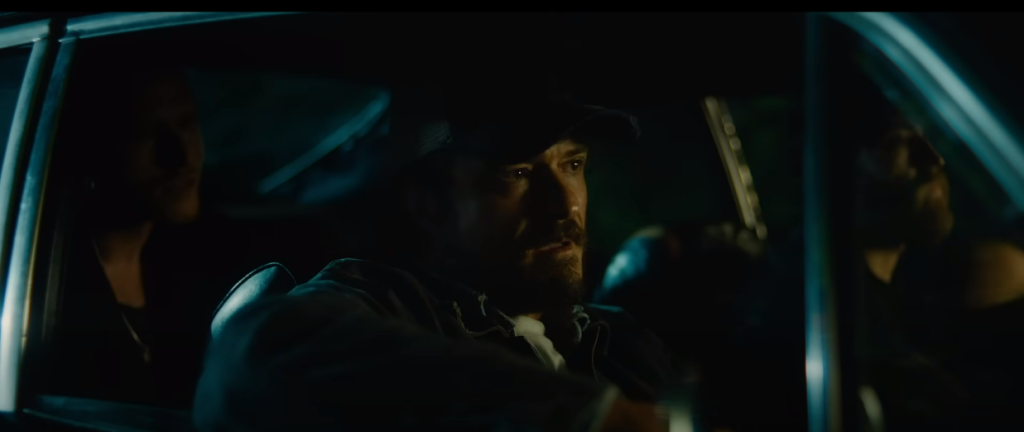
In the climactic shootout, Orlando Bloom’s character is noticeably absent for much of the time. While other characters like Savannah and the preacher are actively involved, the editing struggles to incorporate Bloom’s character effectively. He spends most of the sequence sneaking into the complex through the surrounding woods.
By this point, it seems the filmmakers recognized that Dillahunt and MacDowell were the film’s focal points. It’s not unexpected, as these characters embody the film’s central message: that America’s narrative revolves around God, family, guns, drugs, and money. Amen.
| Aspect | Summary |
|---|---|
| Plot | “Red Right Hand” follows Cash, a former addict, as he navigates a violent world involving a drug kingpin named Big Cat and a family debt that pulls him back into crime. |
| Characters | Cash seeks redemption while dealing with Big Cat’s menacing presence, aided by a preacher and his family. MacDowell’s Big Cat and Dillahunt’s Wilder stand out. |
| Cinematography | Cinematographer Derango captures the gritty atmosphere with high-contrast night scenes, effectively setting the tone for the film. |
| Performance | Bloom’s portrayal of Cash lacks authenticity, while Dillahunt and MacDowell shine in their roles. |
| Authenticity | The film struggles with portraying menacing gang members convincingly, lacking the rugged authenticity needed for their roles. |
| Climactic Shootout | Bloom’s character is notably absent for much of the shootout, highlighting editing issues in incorporating his role effectively. |
| Filmmaker Focus | The filmmakers’ focus shifts to Dillahunt and MacDowell as the film progresses, recognizing them as the focal points conveying the film’s central message. |

